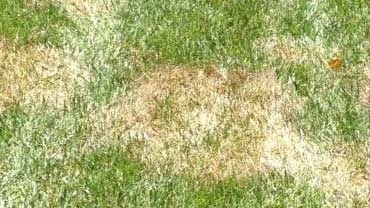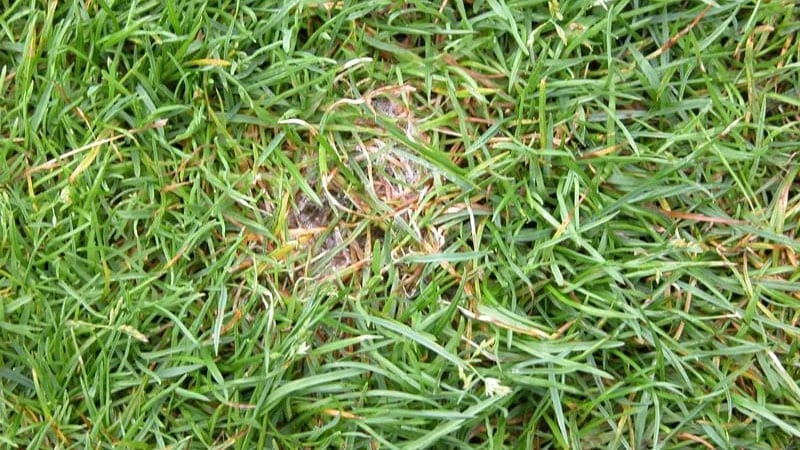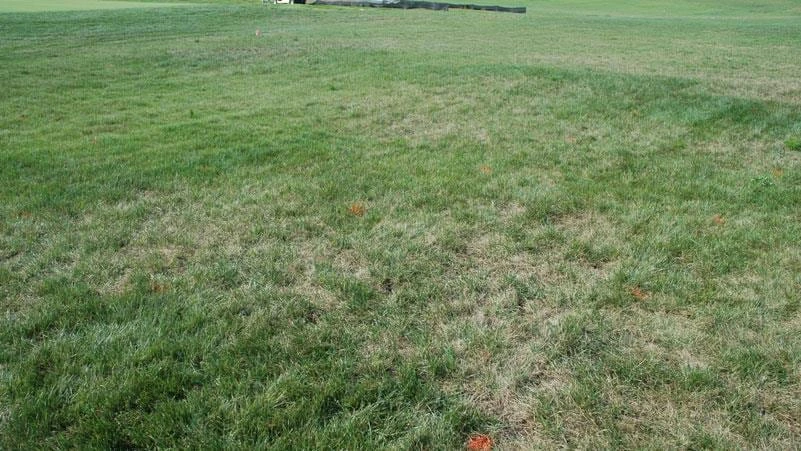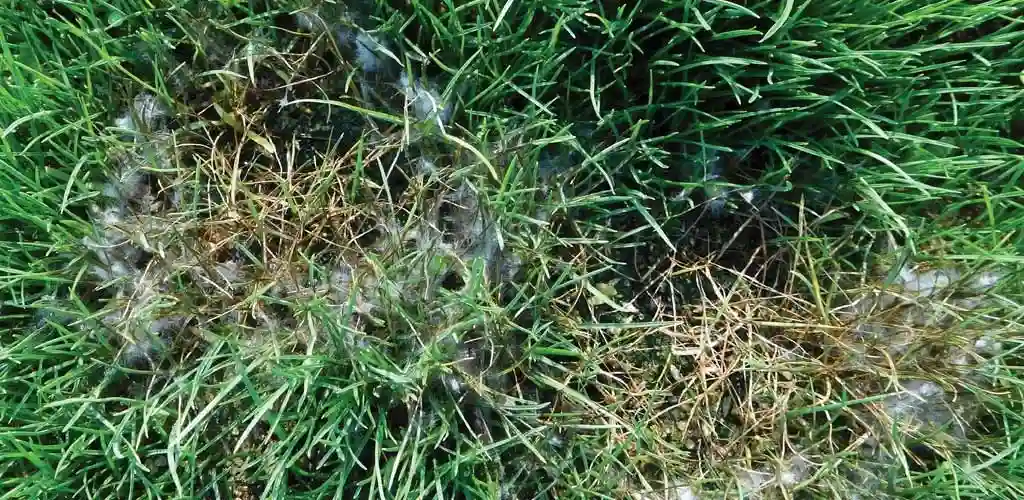Brown Patch
Circular patches 6″-24” in diameter. Affected areas are brown; outer margin of diseased patches may have a grayish “smoke ring”. Leaves blighted with elongated oval chocolate-brown lesions. Foliar mycelium may be evident during early morning when dew is present. Typically seen in May to September, especially during hot, humid nights when dew forms or during hot and rainy periods. Foliar mycelium common.

Dollar Spot
Lesions on leaves are hour-glass shaped, bleached white, tan or straw- brown in color and extend across the entire width of leaf, normally bordered by brown, purple or black bands. A bleached-white tip dieback is common. Affected patches are circular and 2″ – 6″ in diameter. Foliar mycelium may be evident with a heavy dew in the morning. Occurs in spring, summer, and fall; most common in early summer and fall.

Gray Leaf Spot
Turf appears wilted despite good soil moisture and looks brownish or gray from a distance. Brown or gray leaf spots with a yellow halo and lesions on leaf margins. Leaves may have a twisted, water-soaked, and velvety appearance in the morning. Typically seen July to October, rarely in Tall Fescue.

Pythium Blight
Circular spots 1″ – 3″ in diameter, but spots may coalesce to cause a non-uniform blighting, especially where water drains over turf. Leaves are grayish or copper- colored, water-soaked, and mycelium is normally present on leaves during early morning hours. Leaves are rapidly blighted and entire plants die in 24 hours. Dead plants in affected spots are brown or red-brown in color, and matted. Most common July to September. Perennial ryegrass and occasionally tall fescue, esp. during hot, humid periods in poorly drained sites. Seedlings of all species planted during warm and humid periods.



